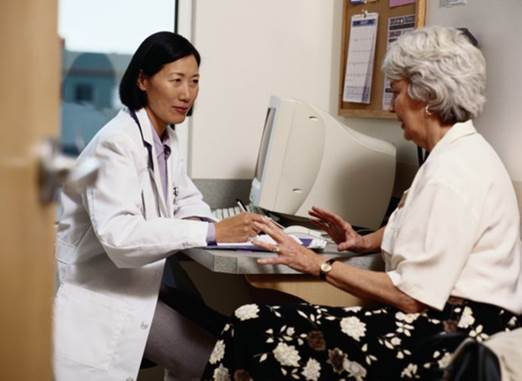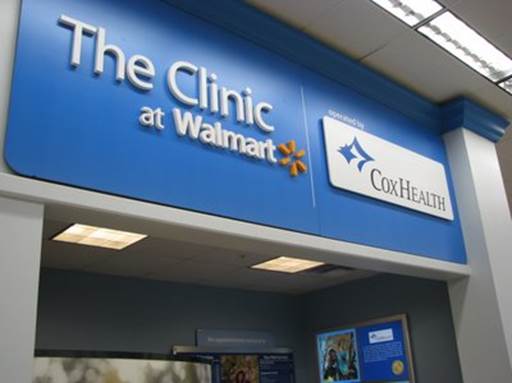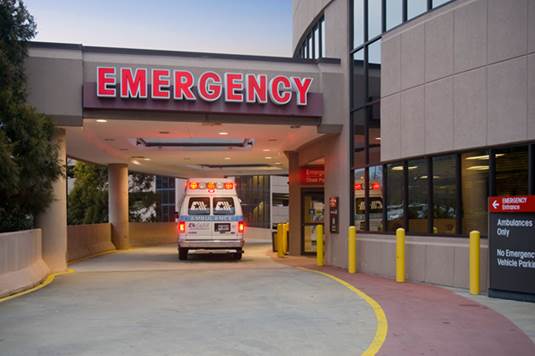Feeling sick? Used to be that you’d
dial your doctor (or go straight to the ER). Now, there are more options. Scan
this chart to decide what’s best for your situation.
There are more than 1,400 retail clinics
and over 8,700 urgent-care centers in the U.S.
Doctor’s office
Go here if...
You have a non-urgent symptom like a sore
throat or an elbow sprain during office hours. Your primary care doctor
(usually a family physician or internist) is also best for checkups, shots and
ongoing issues like diabetes.
Find it fast
Don’t have a doctor? Check with your
insurance for practitioners who are covered under your plan. You can also go to
zocdoc.com and search for local doctors who take your insurance; they’ll even
book appointments.

Doctor’s
office
Who you’ll see
Your own doctor will usually treat you at
each visit, but certain practices have a team of physicians who care for one
another’s patients. And some offices have physician’s assistants, medical
professionals who work in tandem with an MD.
Good to know
Primary care doctors have a relationship
with you and keep records of all your meds and what has worked (or not) in the
past. This means there is less of a chance you’ll be given a drug that will
interact with meds you’re on.
Cut your Wait time
Call ahead of your appointment to see if
the office is on schedule. If you can, avoid Mondays, which are busy due to
people who’ve fallen ill over the weekend. Fridays are also busy with people
who need Rx’s before the weekend.
Retail clinic
Go here if...
You have a minor problem like a sore
throat, a stomachache or a sinus infection – or you need an immunization – and
you can’t get in to see your doctor. Retail clinics are also helpful if you’re
traveling and you get sick.
Find it fast
Retail clinics are normally found in chain
pharmacies like Walgreens and CVS, supermarkets like ShopRite and big-box
stores such as Walmart and Target. You can visit ccaclinics.org to find one in
your area.

Retail
clinic at Walmart
Who you’ll see
A nurse practitioner – they make up 95% of
the clinics’ workforce (the other 5% is physician’s assistants and doctors).
They can do most of what doctors do, including diagnosing and treating
conditions, and, in most cases, writing Rx’s.
Good to know
This is the least costly option if you’re
uninsured or your plan only covers emergencies. A visit is about $75 (shots and
lab tests are separate). Many take insurance (check with yours) and Medicare.
Some also take Medicaid.
Cut your Wait time
Time your visit for the afternoon, since
clinics are often busiest in the a.m., at lunch and early evening, and operate
on a first come, first-served basis. Most keep the hours of the store they’re
associated with, often 8 a.m. to 8 p.m.
Urgent-care center
Go here if...
You have an injury like a sprained ankle or
a burn that can’t wait for a doctor’s visit, but doesn’t warrant a trip to the
ER because it’s not life- or limb- threatening. These centers have X-rays and
can perform minor procedures (stitches).
Find it fast
Locate the nearest Urgent Care Association
of America center by entering your zip code at ucaoa.org/ucaoa_orgs.php. Or,
try findurgentcare.com, where you can search by criteria (for instance, whether
a pediatrician is on staff).

You
have an injury like a sprained ankle or a burn that can’t wait for a doctor’s
visit, but doesn’t warrant a trip to the ER because it’s not life- or limb-
threatening
Who you’ll see
Most likely a doctor, although they also
employ nurse practitioners and physician’s assistants
Good to know
Most centers accept Medicare and some take
Medicaid. If you’re insured, the out-of-pocket cost is lower than the ER.
Without insurance, an average visit is about $185. Most are open 8 a.m. to 8
p.m.
Cut your Wait time
Call ahead urgent-care centers see the most
critical patients first, so there may be a wait. Many offer a phone-ahead
service: you’re given a wait time and put on a list. When you arrive, you’ll
likely be seen quicker than if you’d simply walked in.
Hospital emergency room
Go here if...
You have a life-threatening emergency, a
serious change in your medical condition, or symptoms like difficulty
breathing, chest tightness, weakness on one side, serious abdominal pain or a
sudden change in balance.
Find it fast
Don’t waste time in an emergency. Dial 911.
When the ambulance arrives, you may be able to request a certain hospital,
depending on the severity of your condition.

Don’t
waste time in an emergency. Dial 911. When the ambulance arrives, you may be
able to request a certain hospital, depending on the severity of your condition
Who you’ll see
A doctor who specializes in emergency
medicine. Hospital ERs are staffed with doctors and nurses who are trained to
handle everything from heart attacks to car crashes and have equipment that can
respond to nearly every need.
Good to know
ERs are open 24 hours, 7 days a week and
are required to help all patients – even those without insurance or the ability
to pay. Many work on a sliding scale if you can’t afford to pay your bill, so
inquire about financial aid.
Cut your Wait time
Ask about Fast Track if you have a serious
problem, you’ll be seen right away. If it’s less urgent, you may have to wait.
Some ERs have fast track systems so that less serious patients can be seen sooner
by a doctor or a physician’s assistant.